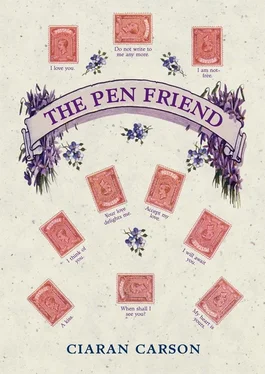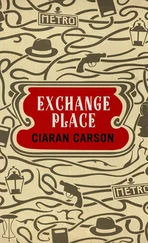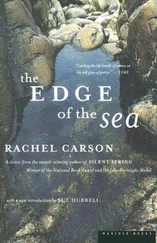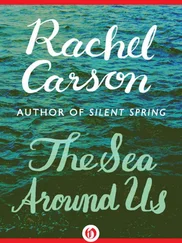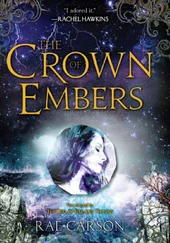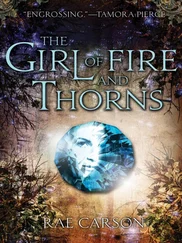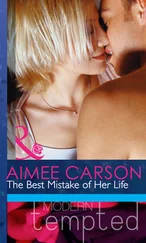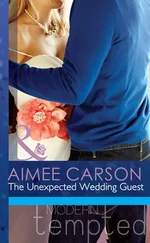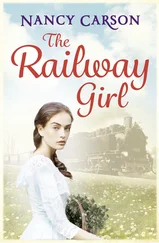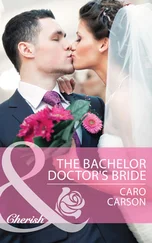Your fourth postcard was not wholly unexpected, for by now the element of surprise had been diminished. And the image you had chosen, of Gemini, was appropriate. You were one of those people who do not believe in astrology, but nevertheless take its prognostications half seriously, as a playful basis for the conduct of their daily lives. Perhaps you still consult your horoscope. At any rate, you are a Gemini, and I a Libra. Your message was at first difficult to interpret — In hoc signo vinces , you wrote, In this sign shall you conquer, the words purportedly heard by Constantine when, on the eve of his victory over the pagan Emperor Maxentius in 312, an angel appeared to him in a vision, holding a Cross, which is a sign of victory over death. You had long lapsed from your mother’s nominal Anglicanism, and I did not seriously believe that you would write these words in any literal sense. So I decided that the sign in question was not the Cross, but Gemini, and I decided to refresh my memory as to its attributes.
A Gemini is lively, skilful, versatile, intellectual, more interested in political theory than direct action. But she can also be unscrupulous, cunning, and evasive, and often contrives to escape blame by imputing it to others. She can be fickle and flirtatious; she is a butterfly, a chameleon. Famous Geminis include Bob Dylan, Paul Gauguin, Marilyn Monroe, Queen Victoria, Sir Arthur Conan Doyle, and Judy Garland. The colour associated with Gemini is not any one colour, but the rainbow, and I think of how you were once Rainbow to me, and of Judy Garland singing ‘Somewhere Over the Rainbow’. Cities ruled by Gemini include London, Versailles, and New York. And it so happened that your card, postmarked London, had been originated in New York, for the image was from a Book of Hours in the Pierpoint Morgan Library in that city, which we visited in the summer of 1983. The Twin Towers of the World Trade Center were still standing then, of course, and I remember making a playful comparison to your status as a Gemini. Yes, you said, didn’t you know that Geminis are very good at trade? We’re ruled by Mercury, after all, the god of commerce. And of thieves, I said. I looked at the card again. Mercury, or Hermes, was the god of the corn-trade, specifically, and of music, so one twin holds a sickle, the other a lyre, emblems of these dual attributes. And Hermes is also the psychopomp, who conducts the souls of the dead to the underworld.
It was July in New York, and I had never experienced such heat, such humidity. But it was my first time in America and everything was beautiful to me, and as you conducted me through the sweltering, claustrophobic underground that smelled of metal, electricity and sweat, I was fascinated by the trains as they drew groaning and trembling into the stations emitting blue sparks from their undercarriages, their cars emblazoned with elaborate graffiti tags of letters amplified and puzzled nearly to deliberate illegibility, yet still names, their forms grappling with themselves in lime greens, glowing yellows and acid blues moving as if animated across the walls of the cars, blossoming from two dimensions into a thought-bubble cycloidal realm, or break-dancing as human figures sculpt the space around themselves, sometimes resembling the flight of birds above the city, or the intertwining pythons of the subterranean world, jagged as a city skyline sometimes, or nebulous as cloudscapes, flickering like neon in a baroque spectacle that belied the curt syllables they had been evolved from — ZINK, SHARP, TAKI 183, SKEME, STITCH, KASS, DAZE, DEAL, DURO, BAN 2, KIST, KEL, SLAVE, CRIME 79, MIN, KASE 2, SEEN. On one car I saw a Campbell’s soup tin the size of a door, but the writing read ZIP.
In the numbered grid of the streets above, everything was sign, from the cupolas of the water-towers stilted on the flat roofs to the fire escapes that ran zigzag down the walls of tenement buildings and the subway trains glimpsed momentarily between buildings on elevated sections of the track. Underfoot there was writing in the shape of the manhole covers embedded in the sidewalk, massive cast-iron shields embossed with their makers’ identities, Abbott Hardware Company Ironworks, Marcy Foundry, Etna Iron Works, Madison Ironworks, Cornell’s Iron Works, long-gone companies that that made their names felt under our bootsoles as we walked over them.
I wandered the time-warp of the Garment District with you, engrossed by the window displays of haberdashery shops, with their cards of loom elastic, buttons, needles, pins and hair-clips, and the reels of cotton threads arrayed like colour charts, past run-down diners, delis, anonymous shops with windows of opaque glass, and high gables bearing the names of defunct businesses in letters of peeling paint, Mutual Storage Company, Kozma Bakery, Moyel Bros Fine Menswear, Arcadian Soup Company, Dubal Loans, Kitzler Cheap Novelties and Fancy Goods.
In Greenwich Village you brought me to a dark little ink emporium, a cornucopia of inks in hues of violet and pale green and bright orange and sepia, red inks and black inks, gold and silver inks, and you told me that every colour smelled differently. Try this, you said, and unscrewed a bottle, and another, and held them to my nose like perfumes. From the red there came an almost vinous odour, and the violet seemed imbued with tar. Like perfumes? I said, and you said, Yes, and I said, holding a bottle of black, If this was a perfume, what would you call it? and you said, Oh, I don’t know, why don’t we call it Styx ? Then we went off the beaten track and in Alphabet City in a street between Avenues B and C we saw an elaborate BELFAST in graffito of green and gold on a gable wall, the cross-stroke of the T elongated into an arrow that doubled back on itself to emerge from the belly of the B , and I knew it must signify something different to the name of the city I came from.
New York was beautiful to me because of its difference, and in memory of that difference I am writing this with an American Esterbrook pen, American as Chevrolet, a 1939 model in iridescent red feathered lines with steel trim. It gleams as brightly as it must have done back then, like a red car parked on the lit forecourt of a filling (gas) station. The Esterbrook, like the Wearever I began with, was advertised as the Dollar Pen, but its selling point was a system of interchangeable nibs which could be unscrewed and screwed in at will, not gold but hard steel, sometimes tipped with iridium but more generally with just the steel rolled into an equally durable ball, and by the 1950s there were more than thirty different points, Firm Medium, Flexible Stub, The Right Point For the Way You Write , Extra Fine, Bold Signatures, For Easier More Comfortable Writing , Falcon Stub For Backhand Writing, Manifold For Carbon Copies, The World’s Most Personal Fountain Pen , Bookkeeping, Firm Fine Clerical, Affordable Writing Pleasure , slogans I gleaned from a run of National Geographic magazines from 1955 that I got from Beringer many years ago and unearthed for this purpose, because when I began writing with the Esterbrook I remembered the name from the pages of the National Geographic , interleaved with ads for Mosler Safe and Western Union, Zenith Radio, Kodak, Zeiss, Hartford Insurance, not to mention the sleek low-slung chrome-trimmed automobiles, Pontiac and Buick and Thunderbird and Cadillac and Chrysler, Put New Fun Under Your Foot, Spectacular from Takeoff to Top Performance, Long Sweeping Lines with Purposeful Meaning , in vivid reds and bright yellows and pastel blues and greens, occupied by proud smiling new owners who signed the ‘check’ with an Esterbrook, Every Inch Your Personal Pen — All Ways and Always . The nibs were numbered. I’m writing this with a Firm Medium, 2668, and the Esterbrook glides across the page as smoothly as a pen costing many times as much, epitomising Affordable Writing Pleasure . And before I flew to meet you in New York I perused the National Geographics for their bright promise of an America in which everything could be bought.
Читать дальше
